How to Write Graphic Design in Japanese Kanji
Welcome to Kanji alive, a web application (https://app.kanjialive.com) designed to help Japanese language students of all levels learn to read and writekanji.
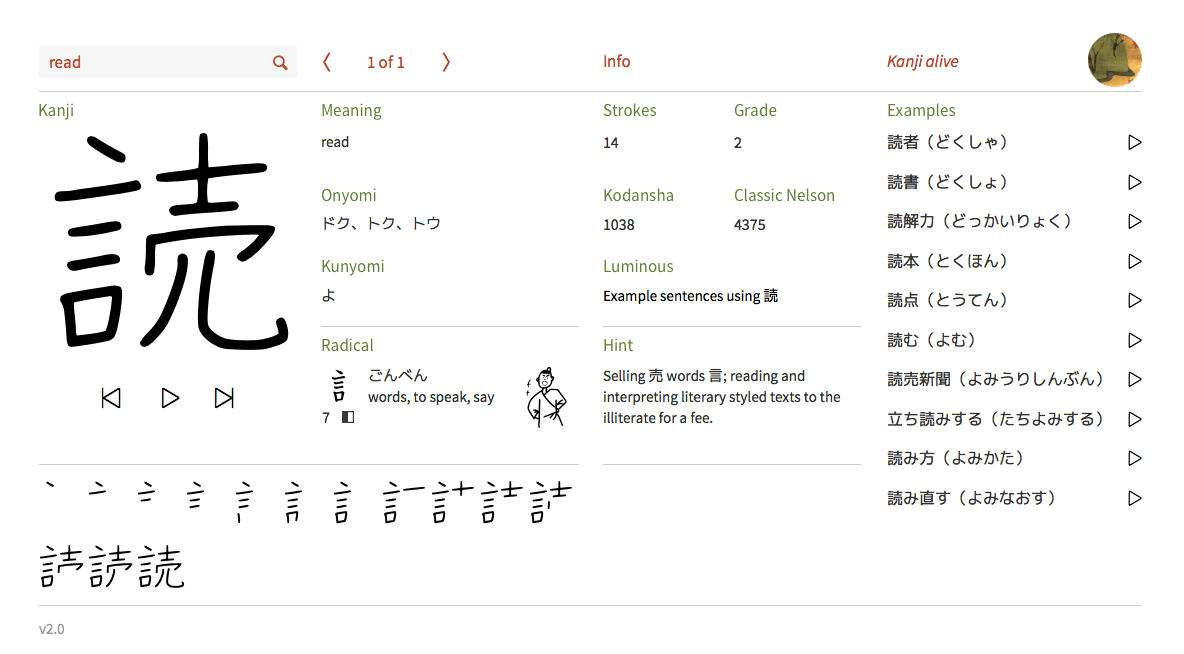
Click for full-sized image
Kanji alive is a resource for learningkanji, dedicated to helping you open the door to the fascinating characters that form the written Japanese language. All of the content in the application was created and reviewed with painstaking attention to detail by experienced Japanese instructors in order to help you best study, practice and retainkanji.
Our Japanese language data and media files (images, sounds, animations, and fonts) are freely available to anyone for re-use under a Creative Commons license. In addition, developers can draw on our data for their applications from our free public API and access the source code and contribute improvements to the Kanji alive web application on GitHub.
Key Features of Kanji alive
Easily search for 1235 kanji in Japanese, romaji or English, by meaning, pronunciation, stroke number or different aspects of a kanji's radical. You can also search for kanji by lesson in popular textbooks (e.g. Genki), by Grade level or study list (e.g. AP Exam). Multiple search terms can even be combined together and shared with others. Read more or watch a demo video.
View the kanji in your search results sorted by stroke number or else grouped together first by radical or kanji stroke number and then sorted again by the canonical order of their radicals. This will help you understand how kanji are related to radicals and provides a clear structure for even large sets of kanji in your search results. Read more or watch a demo video.
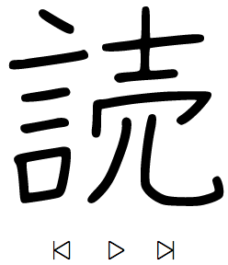
A hand-written kanji animation
To help you writekanji correctly, all our kanji animations are hand-written in the style experienced in common, daily use — with a regular pen, not a calligraphic brush or generated by a computer. The model animations can be paused and reviewed at any point, stroke by stroke, via their stroke order diagrams or by using the animation playback controls. Read more or watch a demo video.
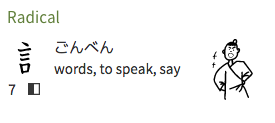
Detailed information on radicals
Learn how a radical lends meaning to its kanji. View an image of each kanji's radical, its name, meaning, stroke number, historical derivation, and (for important radicals) its position in the kanji. Read more or watch a demo video.

Mnemonic Hint
Next to eachkanji you will find vivid mnemonic hints carefully crafted to help you associate the components of akanji to its meaning. Read more or watch a demo video.
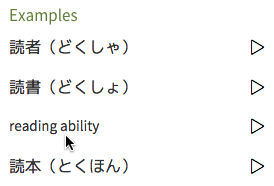
Examples of common compound words and their translations
See and hear how thekanji you are learning are used in context in up to twelve carefully selected example words, together with audio clips of their pronunciations by native male and female speakers. Read more or watch a demo video.
Compare the hand-written kanji animations to modelkanji typefaces in several characteristic and widely used Japanese styles: Kyokashotai, Mincho, Gothic, andMaru. You can also view each kanji in the historical Tensho script, the calligraphic Gyosho script, the decorative, Endo-period Kanteiryu script, and inSuzumushi, a playful, award-winning contemporary typeface. Read more or watch a demo video.
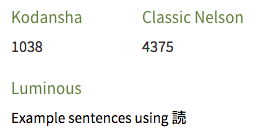
Recommended Kanji Dictionaries
Discover additional contexts and meanings for each kanji and more example sentences via a custom web link to Kenkyusha's online Luminous dictionary or by using the kanji reference numbers for theClassic Nelson and Kodansha dictionaries. Read more or watch a demo video.
Kanji alive is very easy to use. To quickly familiarize you with theKanji alive web app (https://app.kanjialive.com) we have prepared a User Guide, several short demo videos and a handy Quick Reference guide in the app itself. Any of these resources can be used to learn how to use Kanji alive. Japanese language instructors may also wish to read our Notes for Instructors which explain our pedagogic principles and design decisions.
Finally, especially for beginners, we have prepared two online resources which cover the history ofkanji, stroke order basics, and radicals. These are the Introduction to Kanji and the 214 traditional kanji radicals and their variants. We encourage anyone who has just begun to studykanji to review these documents carefully before usingKanji alive in earnest.
Thank you for your interest in Kanji alive! Please don't hesitate to get in touch if you have any questions or comments.
Back to the top
How to Write Graphic Design in Japanese Kanji
Source: https://kanjialive.com/
0 Response to "How to Write Graphic Design in Japanese Kanji"
Post a Comment